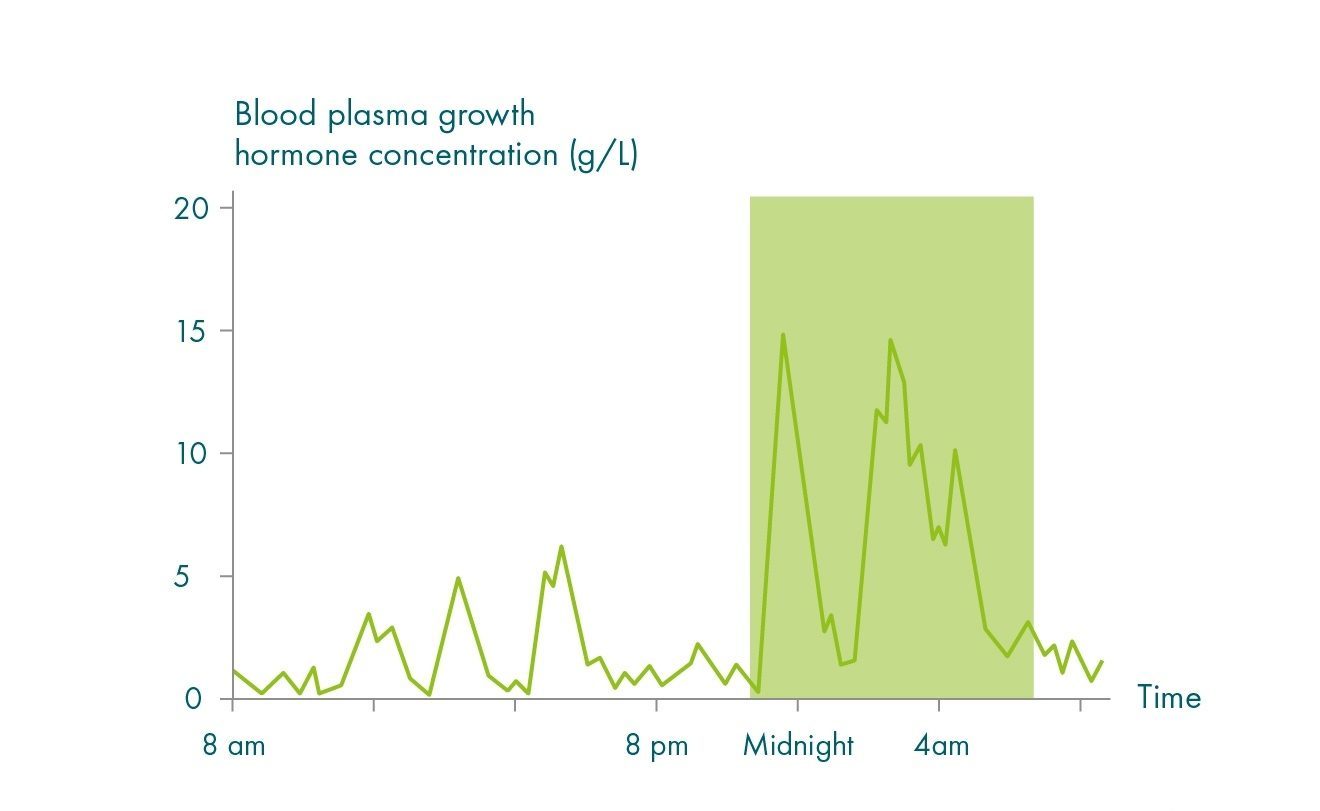Recognizing acromegaly can be difficult as there are lots of different symptoms, which appear over long periods of time.1
Initially your doctor might ask to see some old photos to look for changes in your features,2 and discuss any other symptoms you have.
Diagnosing acromegaly involves a combination of factors: observing physical changes, testing hormone levels in your blood and checking the location and size of a tumour.3
If your doctor thinks you might be suffering from acromegaly, there are several tests they can use to confirm the diagnosis.
To accurately diagnose acromegaly there are two hormones in your body that need to be measured; growth hormone and insulin-like growth factor-1 (IGF-1).3
Measuring growth hormone – oral glucose tolerance test (OGTT)
Your body does not produce growth hormone at a steady rate throughout the day. Instead, there are 6-10 ‘spurts’, with the largest release happening not long after you fall asleep.

Growth hormone release in 24 hours. Adapted from: Branddenberger, G and Weibel, L 2004.4
Because natural levels of growth hormone change so much during the day, a one-off blood test cannot be used alone to diagnose acromegaly, and your doctor will refer you for something called an oral glucose tolerance test.
Growth hormone affects not only the growth of your body, but also how it uses energy. This means that the amount of glucose (sugar) in your blood is related to how much growth hormone your pituitary gland is producing.3 In a person without acromegaly, lots of glucose in the blood stops the release of growth hormone, and levels go down. If you have acromegaly, when you have lots of glucose in your blood your body will continue to produce growth hormone, and your levels will stay high.3
How the test is done
- First your doctor will take a blood sample to measure your glucose and growth hormone levels3
- You will be given a sugary drink3
- To see how your body reacts to the sugar your glucose and growth hormone levels will be tested 4 more times over 2 hours3
Measuring IGF-1
Growth hormone tells your liver to make IGF-1, which is essential for a range of things, including muscle growth and maintaining a healthy heart, kidneys and immune system.4 When IGF-1 levels are high, it tells the body to stop producing growth hormone, which in turn reduces the IGF-1 production.3 If the body is not responding and continues producing growth hormone, then IGF-1 levels will also be high.3
As IGF-1 levels are more constant through the day than growth hormone, your doctor can measure them with a single blood test. If your IGF-1 levels are high it could indicate you have acromegaly.3
REFERENCES:
-
NHS England. Acromegaly. Available at:https://www.nhs.uk/conditions/acromegaly/ Last Accessed: November 2024
-
Endocrine Web. Acromegaly Diagnosis. Available at:https://www.endocrineweb.com/conditions/acromegaly/acromegaly-diagnosis Last Accessed: November 2024
-
Endocrine Web. Acromegaly diagnosis.https://www.endocrineweb.com/conditions/acromegaly/acromegaly-diagnosis Last Accessed: November 2024
-
Brandenberger, G and Weibel, L. J. The 24-h growth hormone rhythm in men: sleep and circadian influences questioned. Sleep Res. 2004;13,251–255.
-
Puche, JE and Castilla-Cortázar, I. J. Human conditions of insulin-like growth factor-1 (IGF-1) deficiency. Translational Med. 2012;10:224.



